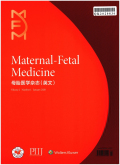- 钛学术文献服务平台 \
- 学术期刊 \
- 医药卫生期刊 \
- 妇产科学与儿科学期刊 \
- 母胎医学杂志(英文)期刊 \
The Clinical Value of Artery Umbilical Cord Blood Gas in Predicting Neonate Condition: A Prospective Cohort Study
The Clinical Value of Artery Umbilical Cord Blood Gas in Predicting Neonate Condition: A Prospective Cohort Study
基本信息来源于合作网站,原文需代理用户跳转至来源网站获取
摘要:
Objective::To evaluate the predictive ability of neonate condition through the traditional parameters and artery umbilical cord blood gas (aUCBG).Methods::A prospective cohort study was conducted in obstetrics and gynecology department between October 2017 and August 2018 at Tongji Hospital in Wuhan, China, and 360 aUCBG samples were collected. The average age of pregnant women was (29.50±4.42) years, range from 19 to 48 years old. The gestational age range from 28
+4 weeks to 41
+3 weeks at admission. Logistic regression and area under the curve (AUC) from Receiver operating characteristic curves were used to identify risk factors, such as, premature rupture of membranes (PROM), high blood pressure, premature delivery (PD), low 1-minute Apgar scores (Apgar 1), low 5-minute Apgar scores (Apgar 5), pH, base excess, bicarbonate, neonatal blood sugar (NBS), and so on, to predict neonatal condition and evaluate the predictive ability of traditional and aUCBG parameters.
Results::In all cases, PROM, PD, Apgar 1, Apgar 5, pH, base excess, bicarbonate, total carbon dioxide, and neonatal blood sugar were risk factors and were associated with poor condition of neonate. Apgar 1 were an independent risk factor. Combined traditional and aUCBG parameters had higher AUC of 0.895 (95% confidence interval (
CI): 0.830-0.960,
P<0.001). In cesarean section subgroup, high blood pressure, PD, and Apgar 1 were risk factors and were associated with poor condition of neonate. Apgar 1 and low pH were the independent risk factors. Combined traditional and aUCBG parameters had highest AUC of 0.940 (95%
CI: 0.886-0.993,
P<0.001). In vaginal delivery subgroup, maternal age above 35 years, PROM, PD, Apgar 1, Apgar 5, and male newborn were risk factors and were associated with poor condition of neonate. Maternal age above 35 years was an independent risk factor. Combined traditional and aUCBG parameters had highest AUC of 0.897 (95%
CI: 0.828-0.965,
P<0.001). For pregnant women without comorbidities and complications of pregnancy, aUCBG may not be necessary.
Conclusion::In high-risk pregnancies, especially lower Apgar scores, PD, and maternal age above 35-year old, aUCBG is recommended. Traditional parameters combined with aUCBG might increase the predicting ability of neonate condition.

推荐文章
脐血干细胞移植治疗非血液学疾病的临床研究进展
脐血干细胞
脐血间充质干细胞
非血液学疾病
循环系统
内分泌系统
神经系统
脐血间充质干细胞在舌鳞癌治疗中的相关研究与效应
脐血间充质干细胞
舌鳞癌
细胞增殖
细胞迁移
细胞侵袭
内容分析
关键词云
关键词热度
相关文献总数
(/次)
(/年)
文献信息
| 篇名 | The Clinical Value of Artery Umbilical Cord Blood Gas in Predicting Neonate Condition: A Prospective Cohort Study | ||
| 来源期刊 | 母胎医学杂志(英文) | 学科 | |
| 关键词 | Apgar score Artery umbilical cord blood gas (aUCBG) High-risk Neonate condition pH Predictive ability Pregnancy Risk factor | ||
| 年,卷(期) | 2021,(3) | 所属期刊栏目 | Original Article |
| 研究方向 | 页码范围 | 176-184 | |
| 页数 | 9页 | 分类号 | |
| 字数 | 语种 | 中文 | |
| DOI | 10.1097/FM9.0000000000000073 | ||
五维指标
引文网络
引文网络
二级参考文献 (0)
共引文献 (0)
参考文献 (0)
节点文献
引证文献 (0)
同被引文献 (0)
二级引证文献 (0)
2021(0)
- 参考文献(0)
- 二级参考文献(0)
- 引证文献(0)
- 二级引证文献(0)
研究主题发展历程
节点文献
Apgar score
Artery umbilical cord blood gas (aUCBG)
High-risk
Neonate condition
pH
Predictive ability
Pregnancy
Risk factor
研究起点
研究来源
研究分支
研究去脉
引文网络交叉学科
相关学者/机构
期刊影响力
母胎医学杂志(英文)
主办单位:
中华医学会
出版周期:
季刊
ISSN:
2096-6954
CN:
10-1632/R
开本:
16开
出版地:
北京西城区东河沿街69号303室
邮发代号:
创刊时间:
2019
语种:
chi
出版文献量(篇)
122
总下载数(次)
0
总被引数(次)
2
期刊文献
相关文献
推荐文献

 免费查重
免费查重










